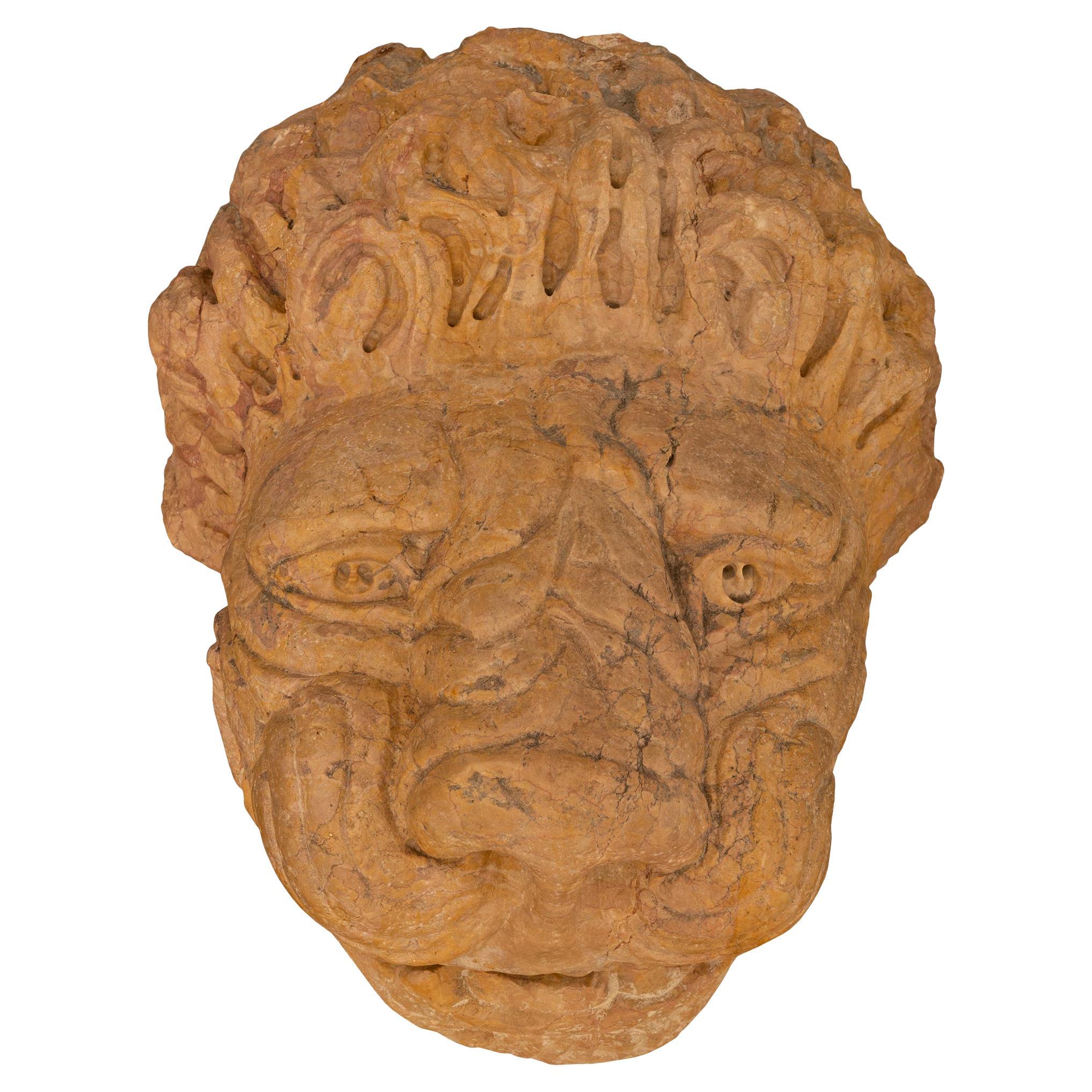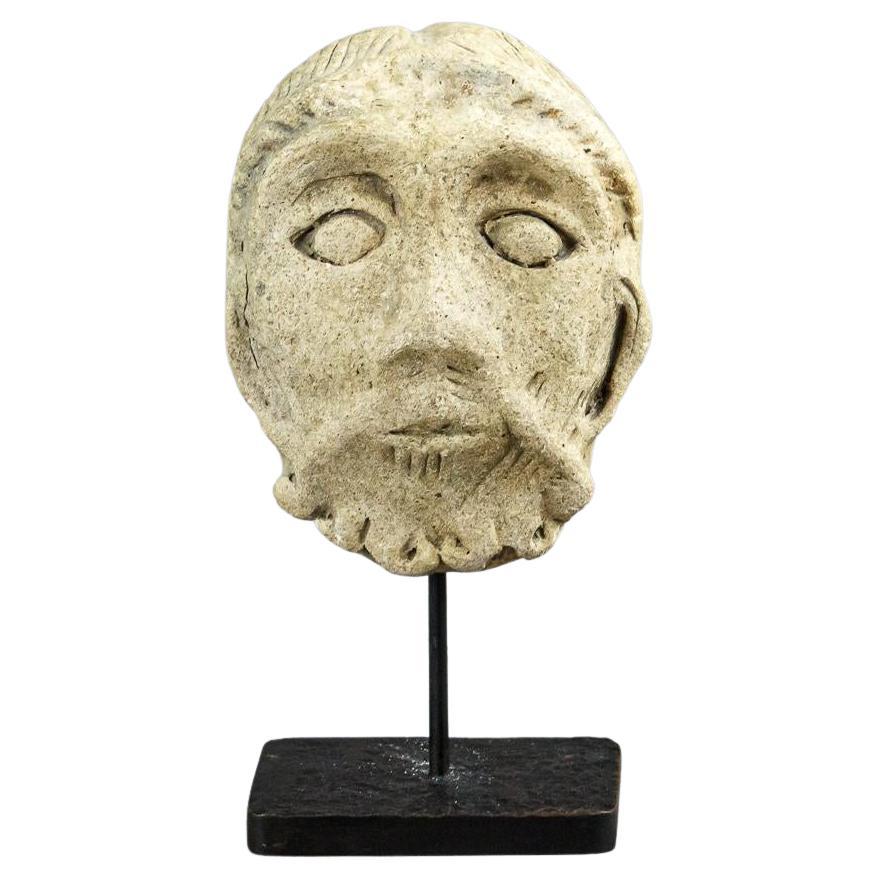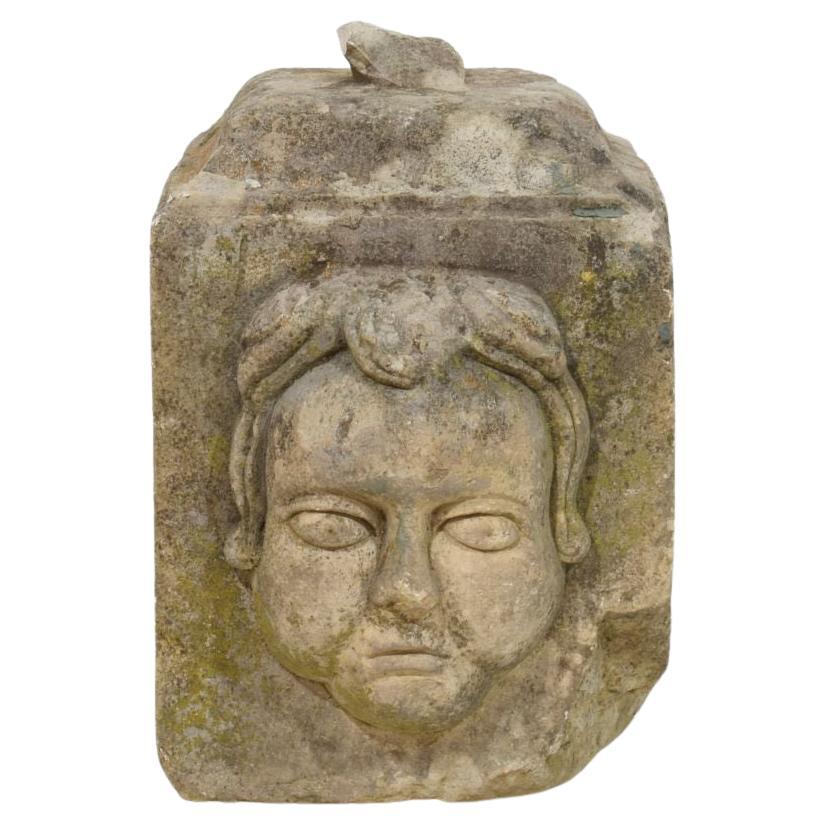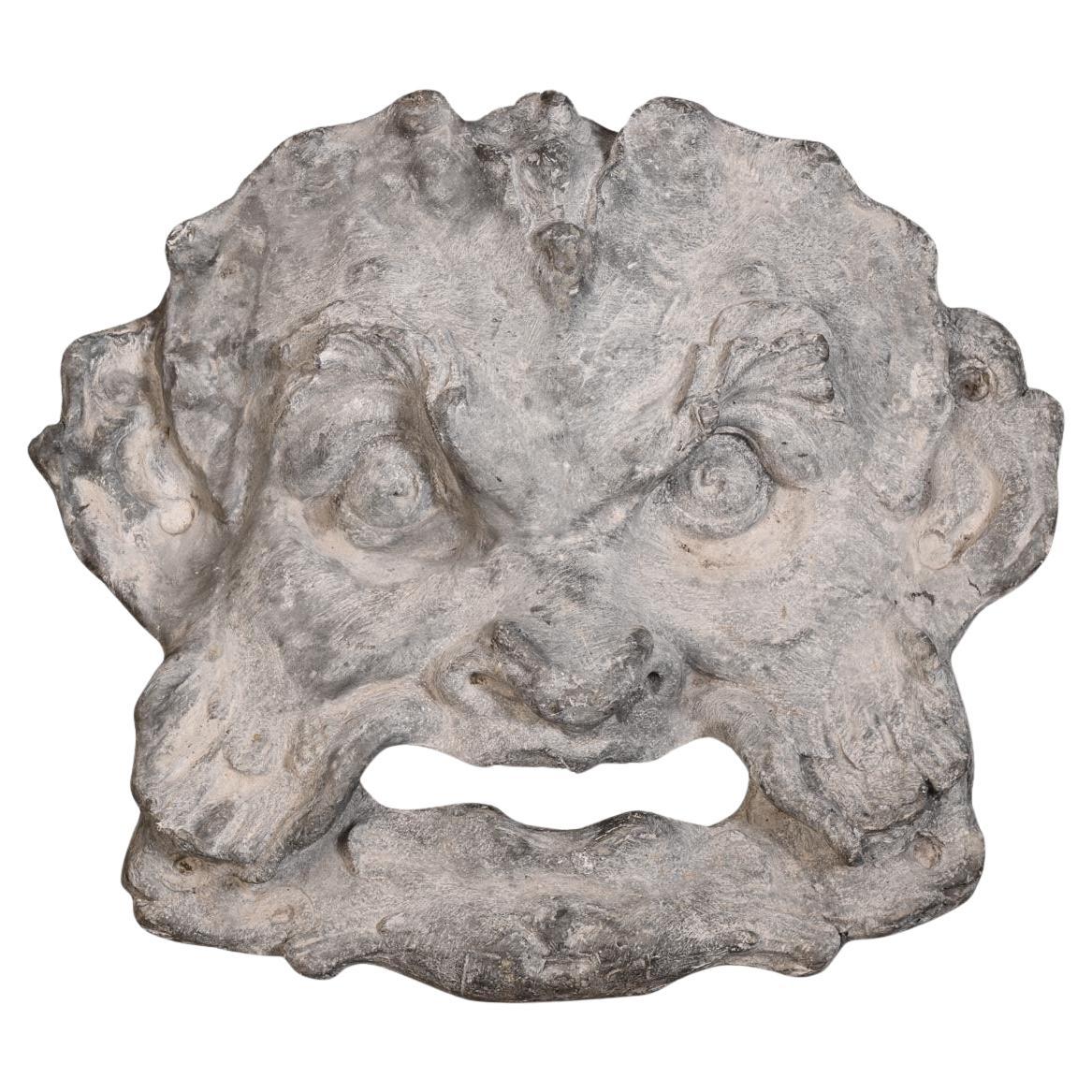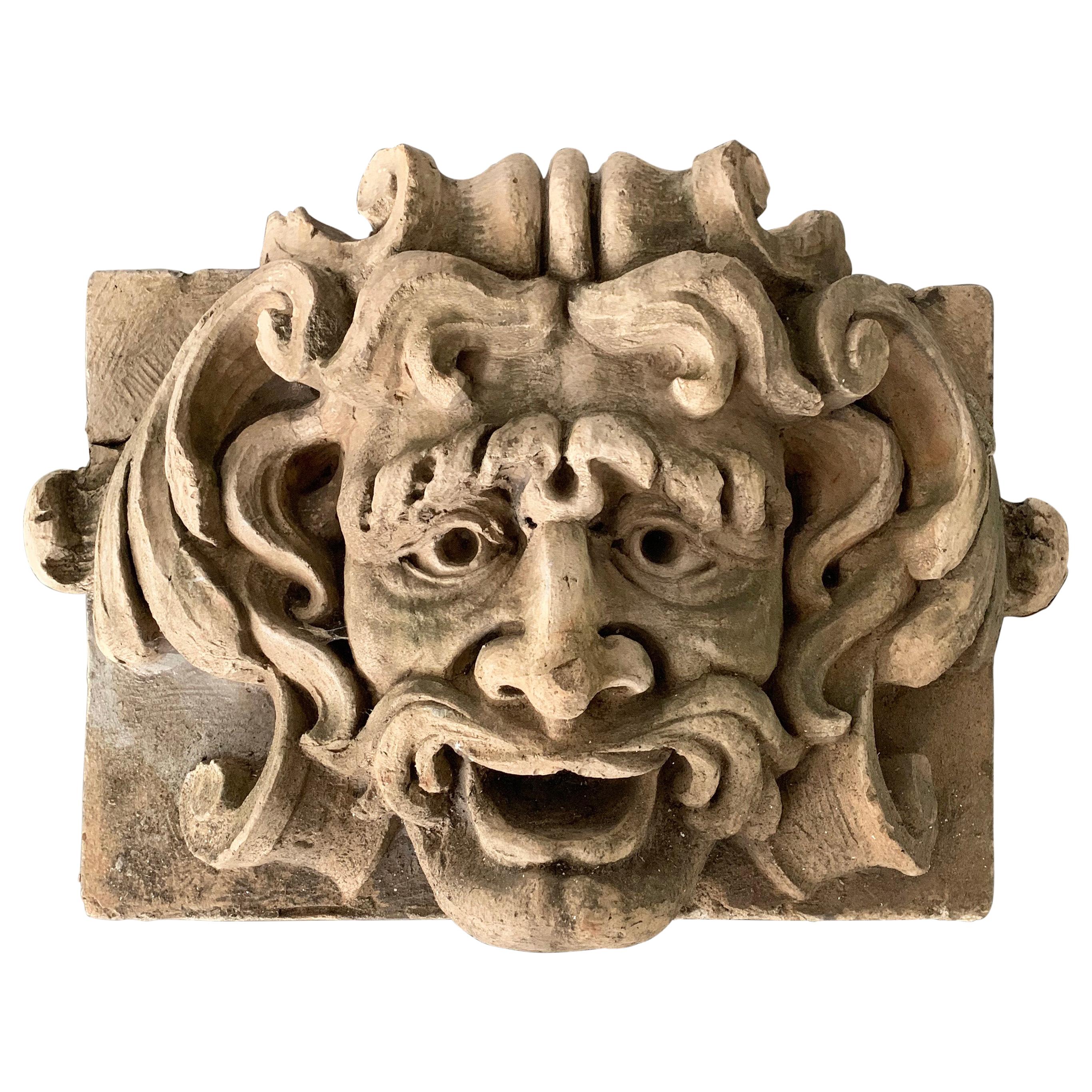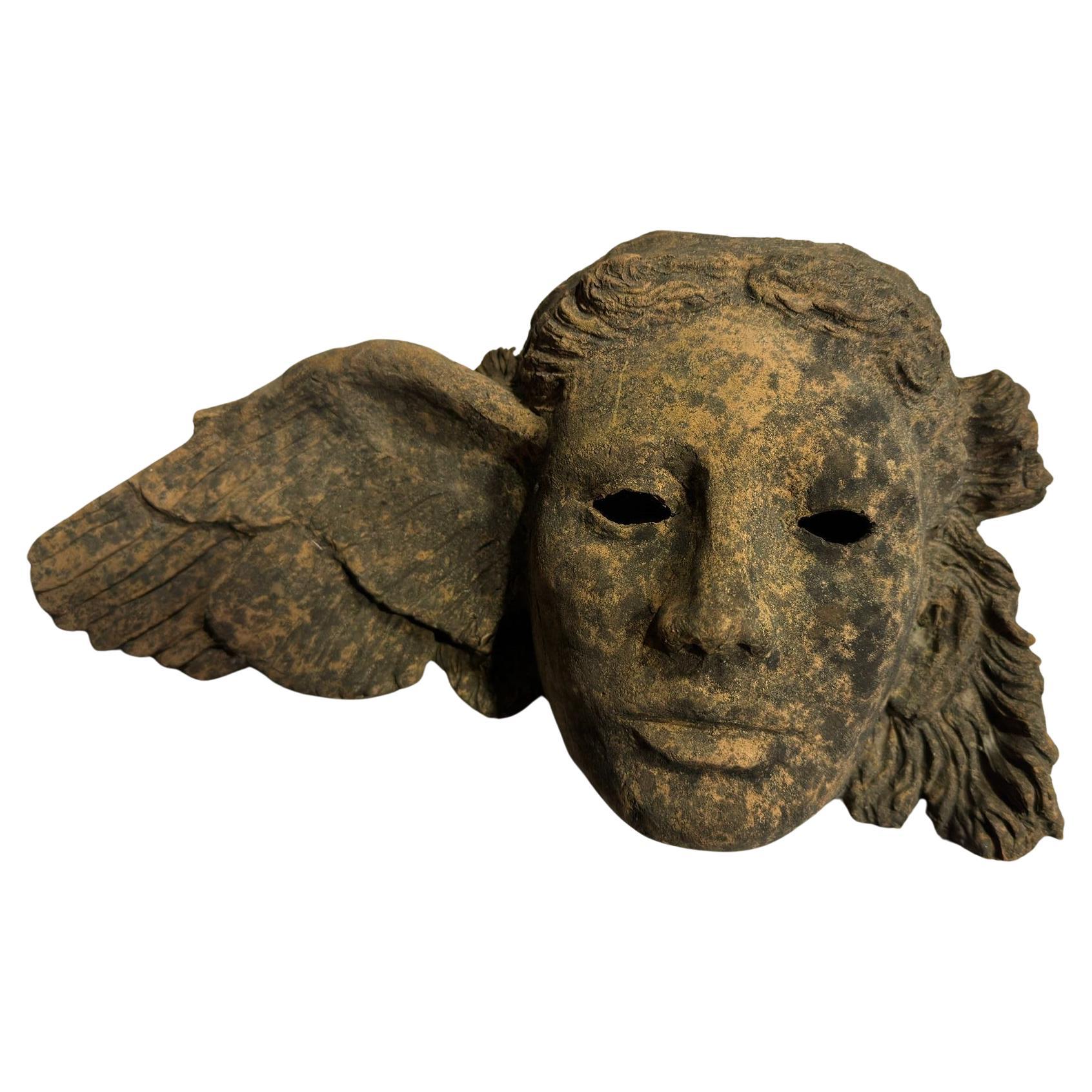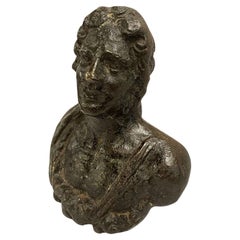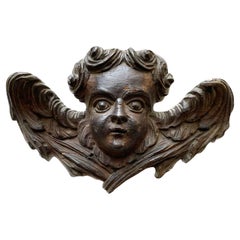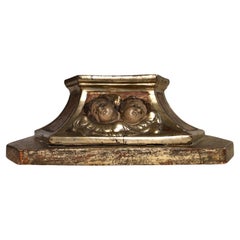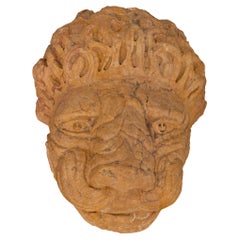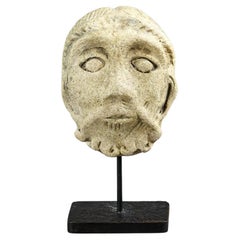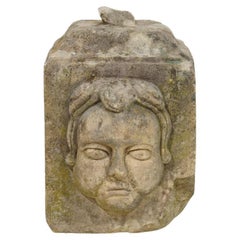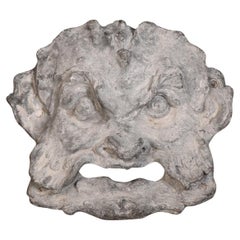Items Similar to 20th Century Italian Stone Fountain Mask
Want more images or videos?
Request additional images or videos from the seller
1 of 17
20th Century Italian Stone Fountain Mask
$1,437.29
£1,065.11
€1,200
CA$1,962.17
A$2,182.83
CHF 1,144.27
MX$26,673.71
NOK 14,570.84
SEK 13,716.43
DKK 9,136.69
Shipping
Retrieving quote...The 1stDibs Promise:
Authenticity Guarantee,
Money-Back Guarantee,
24-Hour Cancellation
About the Item
This antique stone mask was probably used in a fountain. It is a very decorative Italian antique object. The mask fits as decorative object on a bureau or placed somewhere else in a living space. This mask depicts a lion head or a moustached male face, it is hard to understand since the lower part of the sculpture is missing. This loss makes this fragment undefined and fascinating.
These fountain masks were designed to be on a wall or pedestal over a basin with the water flowing through the mouth.
Italian origin, dated to early 1900, it comse from a Milanese private collection.
This artwork is shipped from Italy. Under existing legislation, any artwork in Italy created over 70 years ago requires a governative license for export called Belle Arti. The shipping may require additional 2-3 handling weeks to require and get the license according to the final destination of the artwork.
- Dimensions:Height: 10.63 in (27 cm)Width: 10.63 in (27 cm)Depth: 5.52 in (14 cm)
- Style:Classical Roman (In the Style Of)
- Materials and Techniques:
- Place of Origin:
- Period:
- Date of Manufacture:1900
- Condition:Wear consistent with age and use. Minor losses.
- Seller Location:Milano, IT
- Reference Number:Seller: A10661stDibs: LU2160332314802
About the Seller
5.0
Vetted Professional Seller
Every seller passes strict standards for authenticity and reliability
Established in 1990
1stDibs seller since 2016
182 sales on 1stDibs
Typical response time: 1 hour
Associations
International Confederation of Art and Antique Dealers' Associations
- ShippingRetrieving quote...Shipping from: Milano, Italy
- Return Policy
Authenticity Guarantee
In the unlikely event there’s an issue with an item’s authenticity, contact us within 1 year for a full refund. DetailsMoney-Back Guarantee
If your item is not as described, is damaged in transit, or does not arrive, contact us within 7 days for a full refund. Details24-Hour Cancellation
You have a 24-hour grace period in which to reconsider your purchase, with no questions asked.Vetted Professional Sellers
Our world-class sellers must adhere to strict standards for service and quality, maintaining the integrity of our listings.Price-Match Guarantee
If you find that a seller listed the same item for a lower price elsewhere, we’ll match it.Trusted Global Delivery
Our best-in-class carrier network provides specialized shipping options worldwide, including custom delivery.More From This Seller
View AllTragic Art Deco Mask In Silver-plated Ceramic by Neapolitan Cacciapuoti 1930s
By Guido Cacciapuoti
Located in Milano, MI
Cacciapuoti Tragic Mask, Italian Art Dèco figurative sculpture by Neapolitan artist Guido Cacciapuoti (Naples 1892- Milan 1953) depicting a tragic mask, made of ceramic, hand-molded...
Category
20th Century Italian Art Deco Figurative Sculptures
Materials
Ceramic, Harewood
Figurative Knob in Iron 1600 Italian Handle with Bust of Boy
Located in Milano, MI
Iron Bust From 1600 depicting a boy with curly hair, dressed in a tunic that leaves one shoulder uncovered. Made of cast iron, the pommel has a dark patina and is in good condition, ...
Category
Antique 17th Century Italian Baroque Figurative Sculptures
Materials
Iron
Winged Putto Italian Sculpture 1700 Face of Angel in Carved Wood
Located in Milano, MI
Winged Putto Sculpture of Italian origin from the 1750s depicts the Face of Angel In Carved Wood from a liturgical ornament to which it was attached with two nails, holes can still ...
Category
Antique Mid-18th Century European Rococo Figurative Sculptures
Materials
Pine
PiedistalIo Italiano Intagliato con Putti 1700 Basamento Porta Scultura - Vaso
Located in Milano, MI
PiedistalIo Italiano di fine 1700, Basamento scolpito con teste di Putti laccate sul fronte, di forma sagomata, ideale come base porta sculture o porta vaso di gusto barocco.
In buon...
Category
Antique 18th Century and Earlier Italian Baroque Pedestals and Columns
Materials
Silver Leaf
Figurative Knob in Bronze 1600 Italian Handle with Bust of Boy
Located in Milano, MI
Bronze Bust Of 1600s, cast depicting a young boy with curly hair and a gathered robe over his neck ending in an oval section with beaded border. This antique bronze knob of Italian ...
Category
Antique 17th Century Italian Baroque Figurative Sculptures
Materials
Bronze
Jesus Christ Head Relief Italian Vintage Wall Decoration Panel
Located in Milano, MI
A vintage deeply carved Cembran pinewood Christ Head bas-relief, a religious wall hanging panel depicting a Christ head wearing thorns and holding cross. O...
Category
Late 20th Century Italian Decorative Art
Materials
Wood
You May Also Like
Italian 16th-17th century Rosso Verona marble fountain head
Located in West Palm Beach, FL
An exceptional and most impressive large scale Italian 16th-17th century Rosso Verona marble fountain head. This rare and most important marble lion's head displays an open mouth fro...
Category
Antique 17th Century Italian Fountains
Materials
Marble
Romanesque Antique Carved Stone Head
Located in Pease pottage, West Sussex
Engaging Romanesque Antique Carved Stone Head, intriguing linear incised hair, tightly curled beard and moustache, wide eyes and pronounced e...
Category
Antique 15th Century and Earlier French Figurative Sculptures
Materials
Limestone
French 17th/ 18th Century Baroque Hand Carved Stone Head Ornament
Located in Buisson, FR
Wonderful 17th/ 18th century baroque hand carved stone head ornament. lovely folk art style.
France circa 1650-1750.
Weathered and some small losses.
H:24cm W:16cm D:20cm
Category
Antique 17th Century French Baroque Statues
Materials
Stone
$688 Sale Price
42% Off
Regence-style lead grotesque fountain mask
Located in SAINT-OUEN-SUR-SEINE, FR
France, 19th century
Lead
This ornamental fountain mask exemplifies the Regence style, a transitional aesthetic between the late Baroque and early Rococo periods in France . Cast in...
Category
Antique 19th Century French Regency Fountains
Materials
Lead
Large Carved Garden Gargoyle Alto Relief
Located in Brooklyn, NY
Impressively, large, carved concrete, alto relief depicting an open mouthed, Poseidon-like, gargoyle.
Category
Early 20th Century American Greco Roman Statues
Materials
Concrete
"THE NIGHT HIPNOS" Italian Terracotta Mask 20th Century
Located in Madrid, ES
"THE NIGHT HIPNOS" Italian Terracotta Mask 20th Century
40cm x 20cm
THE NIGHT - PRIMORDIAL DIVINITY
According to the Orphic tradition (from Orpheus singer and musician, son of Eagr...
Category
20th Century Italian Modern Figurative Sculptures
Materials
Terracotta
More Ways To Browse
Italian Stone Antique
Fragment Stone
Stone Carved Faces
Antique Roman Stone
Face Stone Sculptures
Face Mask Sculpture
Antique Stone Lions
Stone Head Sculpture Hand Carved
Roman Fragment
Animal Heads Wall
Italian Male Sculpture
Carved Stone Masks
Carved Stone Fragments
Stone Male Sculptures
Roman Stone Head
Fountain Face
Antique Wall Water Fountains
Fountain Mask
